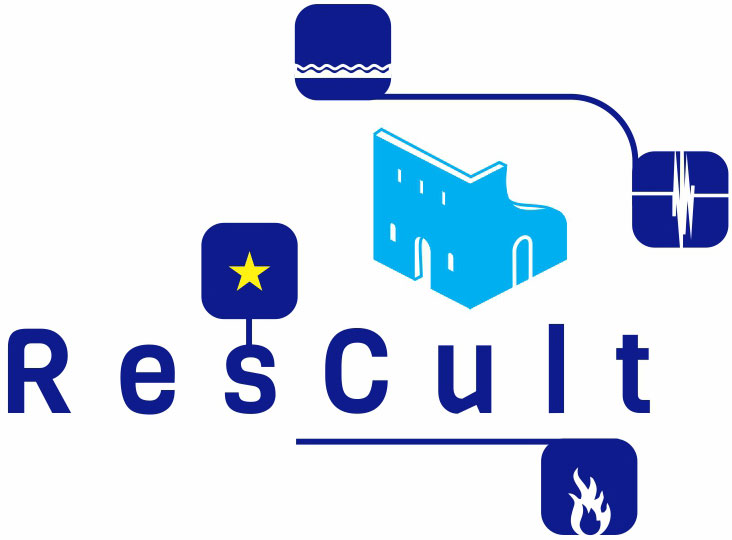Project facts
Presentation
The overall objective of RESCULT is to enhance the capability of Civil Protection (CP) to prevent and mitigate impacts of disasters on sites of Cultural Heritage (CH). This will be done through the realization of an integrated European Interoperable Database (EID) for CH, designed to provide a unique framework for CP, national Ministries of CH, the European Union (EU), local authorities. Moreover, RESCULT will provide a disaster risk reduction strategy identifying tailored actions and investments to improve both prevention and resilience capacities.
Specifically, RESCULT is working on the following three overall objectives:
- Improvement of the Disaster Risk Reduction strategy (for prevention and resilience), according to the principles of Sendai Framework.
- Increase cooperation and interoperability between EU member states for the sake of protecting Cultural Heritage (information sharing, interoperable protocols, best practices dissemination, alignment with EU policies/standards
- Enhancement of the capability of Civil Protection Bodies to understand/prevent/mitigate disasters impacts on Cultural Heritage
For more, please consult the presentation slides.
Impacts & Results
The overall objective of RESCULT is to enhance the capability of First Responders to prevent and mitigate impacts of disasters on sites of Cultural Heritage. This was be done through the realization of an integrated European Interoperable Database (EID) for cultural heritage, designed to provide a unique framework for first responders as well as Local and National Authorities. Moreover, RESCULT will provide a disaster risk reduction strategy identifying tailored actions and investments to improve both prevention and resilience capacities.
Specifically, RESCULT worked on the following three overall objectives:
- Improvement of the Disaster Risk Reduction strategy (for prevention and resilience), according to the principles of Sendai Framework.
- Increase cooperation and interoperability between EU member states for the sake of protecting Cultural Heritage (information sharing, interoperable protocols, best practices dissemination, alignment with EU policies/standards)
- Enhancement of the capability of Civil Protection Bodies to understand/prevent/mitigate disasters impacts on Cultural Heritage
The European Interoperable Database (EID) is the key outcome of the RESCULT project. It represents a composite tool designed to support emergency operators, authorities and decision-maker in protecting cultural heritage against natural hazards.
The EID is designed and implemented to support emergency operators by providing six different interfaces:
- Cultural Heritage
- Disaster information
- 3D models
- Risk analysis
- Advice-Seeking
- Crowd information Acquiring
The EID can be accessed here.

